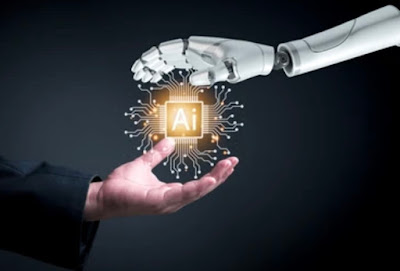WHY AI STILL NEEDS US: THE POWER OF HUMAN - MACHINE COLLABORATION
WHY AI STILL NEEDS US: THE POWER OF HUMAN - MACHINE COLLABORATION
Introduction
Artificial intelligence is reshaping our world—but it hasn’t replaced us, and it likely never will. The power of AI lies not in its independence, but in its partnership with human intelligence. From creativity and empathy to ethical reasoning and nuance, there are vital areas where AI still relies on us. Here’s why human-AI collaboration matters more than ever.
This article sets the stage for a future exploration of how AI will transform the way we live—from healthcare and art-entertainment to food, beauty, and consumer behavior.
1. Input Quality Shapes AI Output
At its core, AI is only as good as the input it receives. Large language models, like ChatGPT, are trained on vast datasets, but their output depends heavily on how a user phrases a request. Two people can ask the same question in different ways and get entirely different results.
This is where prompt engineering comes in—a growing discipline focused on crafting effective inputs to elicit optimal AI responses. Knowing how to ask is becoming just as important as knowing what to ask.
2. Human Intelligence Complements AI Strengths
AI is exceptional at pattern recognition, data processing, and automating tasks at speed and scale. However, it still lacks the subtlety of human intuition, emotional intelligence, contextual awareness, and the creative spark that fuels innovation.
Rather than replacing humans, the most promising path forward is collaboration—where AI augments our capabilities, and we guide AI with the wisdom, empathy, and imagination it lacks.
3. Human Judgment Remains Irreplaceable
In high-stakes environments, human oversight is not optional—it’s essential. Take healthcare: AI can sift through complex data and suggest treatment paths, but doctors make the final call using their clinical experience and emotional insight.
In the arts, AI can suggest melodies, paint in styles, or generate scripts—but only humans can breathe life, meaning, and purpose into the output. The same applies to education, law, journalism, and beyond.
Conclusion
AI is a powerful tool, but tools don’t lead—they follow. Human intelligence is not just relevant; it is indispensable. As we enter an era of increasingly intelligent machines, our value lies in our ability to guide them—asking the right questions, making ethical decisions, and imagining what AI cannot. The future isn’t AI versus humans; it’s AI with humans.
In a nutshell, AI is extraordinarily amazing, but it still needs the human mind—intuition, creativity, empathy, and judgment can’t be coded.
In a follow-up article, we’ll explore how AI is set to transform every dimension of modern life—and how we can prepare to thrive alongside it.
References
• Bender, E. M., & Gebru, T. (2021). On the Dangers of Stochastic Parrots: Can Language Models Be Too Big?
• Marcus, G. (2023). The Next Decade in AI: Why We Still Need Human Oversight.
• Amodei, D., & Hernandez, D. (2022). AI and Alignment: The Human in the Loop.
#HumanAndAI #PromptEngineering #AIwithHumans #FutureOfWork #AIethics #HumanIntelligence #AICollaboration #EmpathyAndAI #DigitalWisdom #CreativityMatters #MachineLearning



Comments
Post a Comment